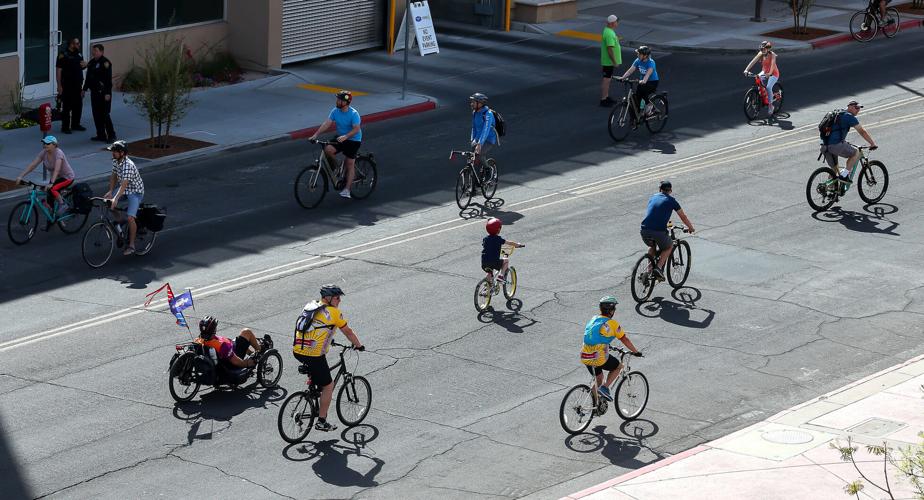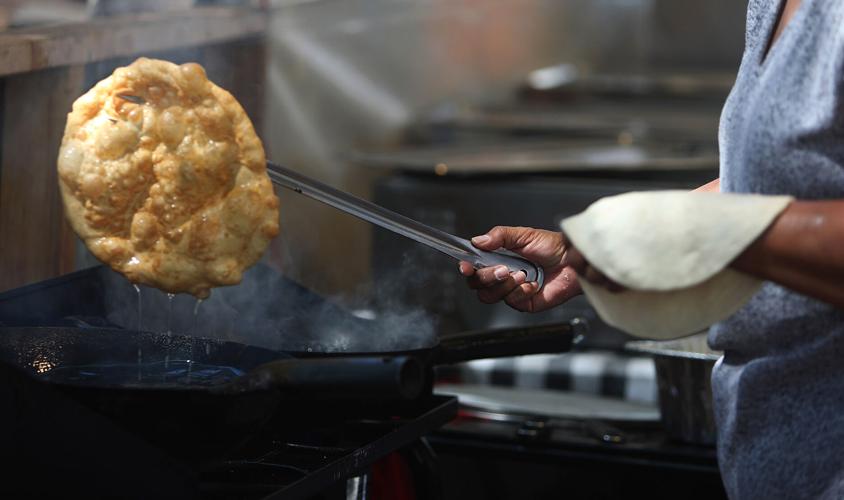Things look great in Tucson from time to time.
The Sunday morning of Tucson Meet Yourself, in October, was a divine stroll downtown from booth to booth, contemplating food choices, looking at art and sun hats, with cumbias wafting through the air.
Then there was a Cyclovia bike tour through 85705, one of the city’s rougher zip codes, this month. The smell of fresh tortillas in Old Pascua, pole vaulters randomly demonstrating their sport on North Sixth Avenue, even the towering Tucson House looking good for a day.
There are so many of these traditions and events on beautiful days in the fall and winter, Tucson can feel heavenly. The All Souls Procession, El Tour de Tucson, football Saturdays, neighborhood festivals. Recently I even rode part of a little-known fat-bike ride through the washes, culverts and alleys of the east side.
It makes me feel good to live here, my home of 25 years, where I’ve married and bought homes and raised kids.
But then something happens like what occurred near East Fairmount Street and North Alvernon Way on Saturday, Nov. 12 and makes me feel terrible about the place. That morning, two teens were arrested in the beating death of a 37-year-old man.
The man, Rabi Gandrama Magar was a Bhutanese refugee who has lived in Tucson since 2011.
He was also developmentally disabled.
Magar could not speak much, he had muscular problems that caused him trouble walking. He lived a humble life in an apartment complex there, cared for by family members who came with him from Bhutan.
The kids who did it, according to police, were in a group of four when they approached Magar where he was sitting outside. A 17-year-old was armed with a BB gun, and a 13-year-old had a baseball bat. When they started to attack him, the two 15-year-olds fled.
Magar tried to run away, police said, but the 13-year-old chased him down and beat him more. Magar died two days later in the hospital.
Awful. Sickening.
And on Sunday the 13th, the next beautiful Tucson morning on the same weekend, more horror: A man went into a smoke shop on South 12th Avenue and shot to death two women inside, police said. Two days later they arrested Yusuf Ahmed-Ibrahim and charged him with the crimes.
I don’t have to list for you all the other violent outrages that have happened in just the past few months. A Pima County constable and two others killed while she was carrying out an eviction. A University of Arizona professor shot to death in the building where he taught and headed the hydrology department.
The horrors have a tendency, for me, to temporarily wipe away the pleasures I derive from living in Tucson. Until I can process an incident, the city loses its shine. After I finally incorporated the fact that Tom Meixner, the hydrology professor, was dead, I could once again venture out and find the city I’ve grown to love.
The two types of experience make me oscillate between optimism and pessimism about the future of the city.
One warm day in September, I caught a Sun Tran bus ride home from the office. Peaceful, cool and free, thanks to the city covering transit fares: Optimism.
On the short walk home I saw two men stealing a bicycle at an apartment complex: Pessimism.
If you talk with someone like Kevin Daily, you’ll get the pessimism straight. He recently founded a group called Tucson Crime Free Coalition that has hosted a couple of events and shown up at local government meetings trying to cajole the city and county to do more about homeless encampments and related crime.
Daily, who lives in Flowing Wells, told me he was motivated by the experience of living near a wash, where homeless people started living in an adjacent culvert.
“I’d be happy to get back to where we were in 2019, where if you saw somebody passed out on the sidewalk, you’d call 911, and they’d be taken somewhere,” he said.
When I asked if he had hope for improvements in Tucson, he said “No, we’re in the middle of a fentanyl-fueled downward spiral.”
It can feel like that, depending on where you live or work. No end in sight.
Tucson is also underperforming economically, compared to peer cities in the West, and we have the nagging concerns about roads and sidewalks and that sort of thing.
While I expect the chronic problem of low-paying jobs to drag on, we are at least on our way to solving the road problems. The money from Prop. 411, approved earlier this year, should bring city streets up to snuff and provide some improved safety for cyclists and pedestrians in coming years.
We’ll see progress on the pavement even if we also see social deterioration around it.
Of course, experiencing good and bad is part of the human experience. No place is perfect.
But for too long, in my experience as a 25-year-resident, Tucson’s negative characteristics have been matching and even overcoming its positives.
For every beloved old tradition, wholesome activity or exciting new development, there’s always been a new affliction to match: Fentanyl addiction and poisonings, homeless encampments, gun crimes.
It’s our challenge to tamp those down, solve them if we can, so they don’t overwhelm what’s good about Tucson.
The family of Deborah Martinez-Garibay, the 43-year-old Pima County constable killed in a shooting Aug. 25, shared memories of her Sunday morning.
Deborah was one of three killed at Lind Commons Apartments after a man being evicted shot her, apartment manager Angela Fox-Heath and 25-year-old Elijah Miranda before turning the gun on himself. Video by Jesse Tellez/Arizona Daily Star.
Tim Steller is an opinion columnist. A 25-year veteran of reporting and editing, he digs into issues and stories that matter in the Tucson area, reports the results and tells you his conclusions. Contact him at tsteller@tucson.com or 520-807-7789. On Twitter: @senyorreporter





